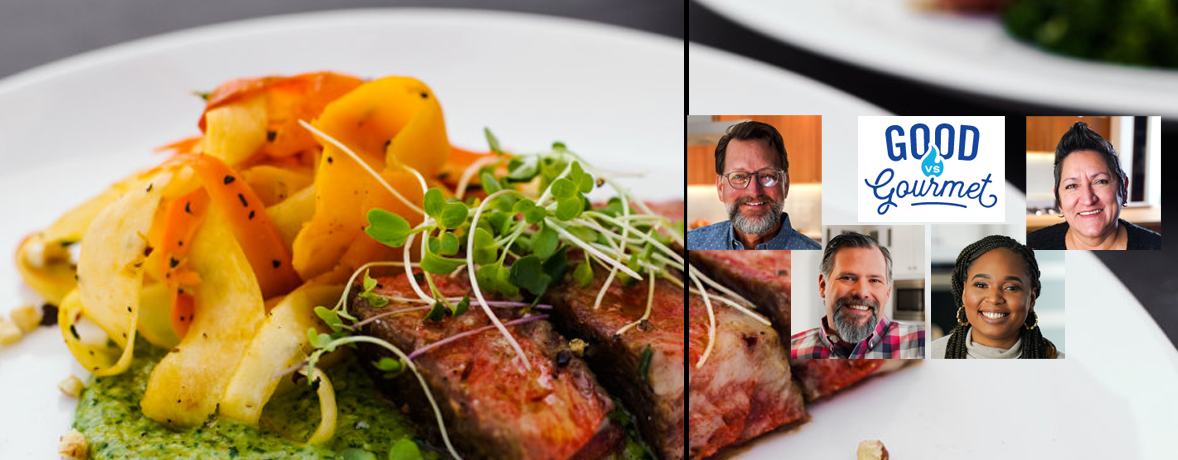Good v. Gourmet
Professional chefs and home cooks prefer natural gas.
Oklahoma Natural Gas' new cooking series, Good vs. Gourmet, showcases four Oklahoma chefs as they cook one dish, two ways: good and gourmet.Episode 1 - Ribeye Steak
Who needs a grill when you can recreate Chef Justin Thompson’s ribeye at home on the range? One ribeye gets a reverse-sear start in the oven (totally worth the time) and both steaks get seared in a skillet before being basted in a brown-butter bath. Elevate your reverse-seared steak even more with a delicious broccolini pesto and festive veggie ribbons.
Episode 2 - Shrimp and Grits
Chef Tiffany Tisdale-Braxton’s New Orleans-inspired recipe for creamy shrimp and grits sure hits the spot. But her crispy fried grit cakes are a pretty compelling take on the classic recipe. Take your pick of grits, both enriched with plenty of smoked gouda and spices and, if you’re feeling fancy, give your dish an instant upgrade with her easy butterflied shrimp.
Episode 3 - Pork Chops
Put your pan-searing skills to practice with either of Chef Kurt Fleischfresser’s incredibly juicy pork chops. Whether you dig into his recipe for seared pork chops with country potatoes or his roasted double pork chops with garlic and pine nuts, his two methods are the best of the best.
Episode 4 - Chicken and Waffles
Take your waffle-making skills up a notch with these two recipes from Chef Melissa Aust. Do you go for traditional Belgian-style waffles topped with a spicy honey sauce? Or savory potato leek waffles smothered in smoked jalapeño gravy? Hard to decide, but neither are hard to make.
Benefits of Cooking with Natural Gas
Natural gas is a favorite energy resource among chefs because it delivers an exact temperature, offers more control and precision to the chef and heats food more efficiently and quickly. In fact, 98% of professional chefs prefer to cook with natural gas.
-
Precise Temperature Control
- Whether you need to turn the heat up high to get your pasta boiling or way down low so your cream sauce can simmer, you’re in control with natural gas.
-
Faster Cooking
- Natural gas reacts immediately when you change the temperature, allowing for more even and faster cooking.
-
Visual Heat Indicator
- The iconic blue flame lets you know when the heat is on.
-
Faster Cooldown Time
- When you turn off the heat, a natural gas stove cools down quickly unlike electric cooktops, which hold onto heat longer after they’re turned off.

